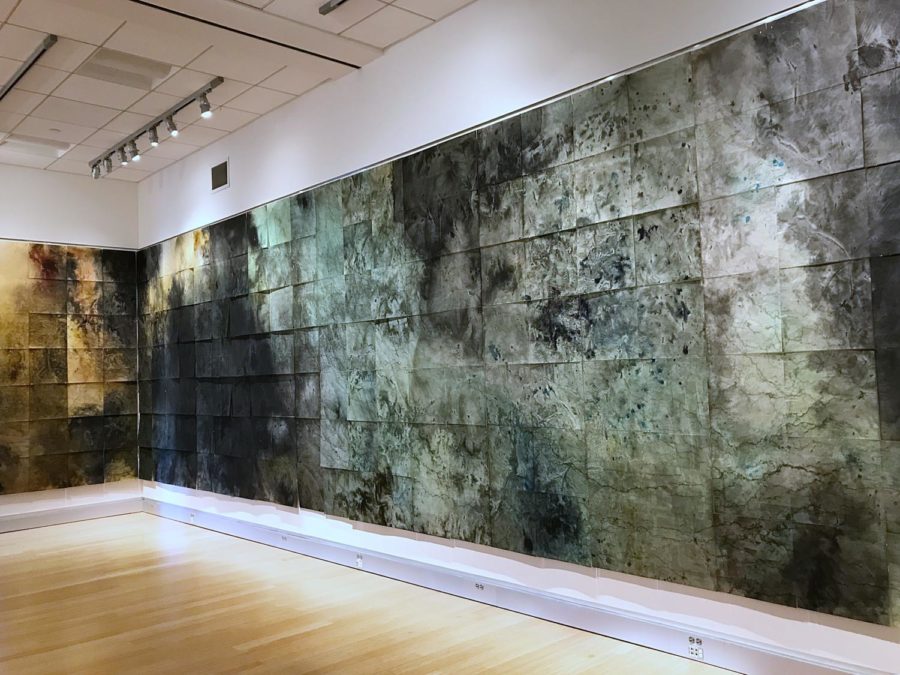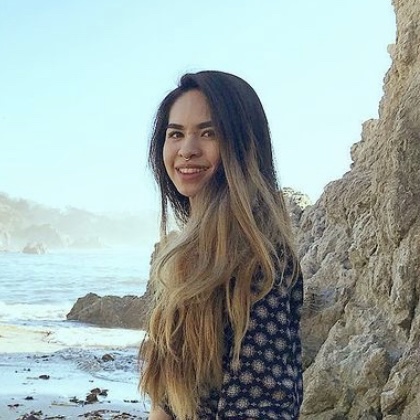The international art exhibition, “The Farthest Shore,” invites viewers to experience art and ideas beyond themselves. The exhibition features six printmaking artists from Canada, Ukraine and the U.S.
On the surface, the theme is landscapes. The development of larger-scale artwork was to immerse the viewers inside the art, such as how landscape would.
Curator and art instructor Hannah Skoonberg described the theme of landscapes as having a sublime quality. “That’s the kind of confrontation with the sublime, because the sublime is always bigger than you and what is bigger than you but the end of you.”
The Farthest Shore invites mysterious ideas beyond one’s self and knowledge—the River Styx, the edge, the unknown and death.
The phrase, “the farthest shore,” is also a subtle reference to a Buddhist teaching, or heart sutra, “Gone to the otherside, the farthest shore. Awakening.”
“It’s a really exciting modern, New York-quality show,” said Donna Larsen, SRJC art instructor, who has an artistic background in New York City.
Printmaking originated as a Japanese technique, before it caught on around the world. The method allows the artist limited control over the final product, as the randomness of the ink creates a slightly different image every time.
The piece “Divining,” by printmaking artist and opening day guest speaker Kelsey Stephenson, encompassed the room upon entrance. Active viewers animate the large-scale artwork as the individual pieces of the whole, constructed of skin-like paper, kitakata, flutters and rustles with each stride. Skoonberg described the black, blue and yellow color-splattered paper as “river delta from space, wet,” while Stephenson added “landscape.”
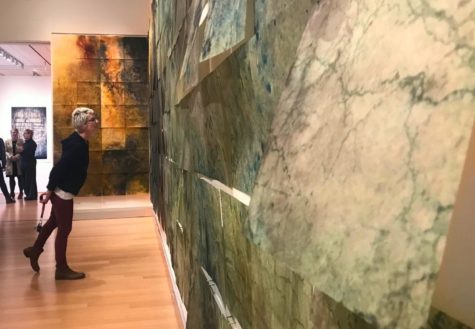
Like how bodies of water connect land, Skoonberg described the idea behind the art pieces—which connect to landscape—as having “a thread of water connecting it.”
The artists of other pieces featured were unable to attend, yet their artwork spoke for itself.
Although some artworks were intentionally three-dimensional, such as “Divinity” by Stephenson and “The Falls” by Nicole Pietrantoni, the two-dimensional artwork had depths of their own.
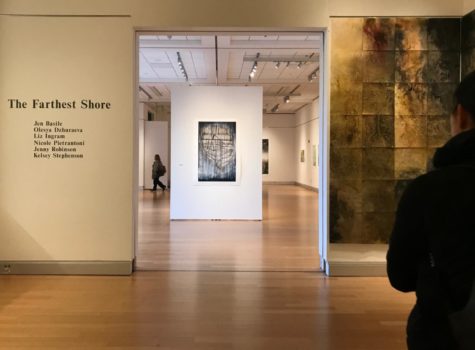
“The Falls” consisted of five books displayed like an accordion or waterfall. Upon close inspection, the black-and-white pages are printed in CMYK pigment—red, yellow and blue pigment—a detail that provides a sense of depth within the two-dimensions.
“A lot of the pieces have a really good sense of space to them, which is very cool with a flat print, it’s an interesting way of looking at things,” said SRJC art student Laura McGinnis, 21.
“It could be seen as flat, I see it as having a ton of depth to it,’’ said McGinnis for the piece “Water on Mars” by Stephenson.
Many of the two-dimensional pieces used a minimalistic-style of heavy line works, such as “Muir Woods” by Jennifer Basile and “Deep Forest 1 and 2” by Olesya Dzhuraeva.
“It gives me a lot of emotion. If I had to describe it: a geographical emotion. It wants to take me to a place, but that place is something familiar to me; something maybe I don’t remember, or somewhere I want to go,” said SRJC art student Richard Rose, 21 about the piece “Muir Woods.”
“Infrastructure #1 and #2” by Jenny Robinson is a contemporary take of landscapes, created on an extremely thin, yet extremely resilient material, called gampi silk tissue.
Other abstract pieces wove between an airy and fluid quality, prominent in “Penetrating Gestures” by Liz Ingram to sharp, grooving lines, like those in “Water on Mars.”
Stephenson’s inspiration, “places as memory,” suggests the complexity of interactions, time and space. The exchanged impression between landscape and human beings—how landscape affects our perspective, as our actions impact the land in return.
Skoonberg said some pieces have “a flavor of darkness,” seen in “Penetrating Gestures: Entropy, Repose, Membrane, Gravity” by Ingram. It compliments and contrasts with “Divinity,” which begins the exhibit with a sense of buoyancy. The piece captivates the room with its vibrant, oceanic theme, but transforms into a darkness as one is close-distance enough to decipher the rightside-up and upside-down poetry throughout the four pieces. The veiled subjects suggests struggling or drowning subjects; disorientation, descent and cessation.
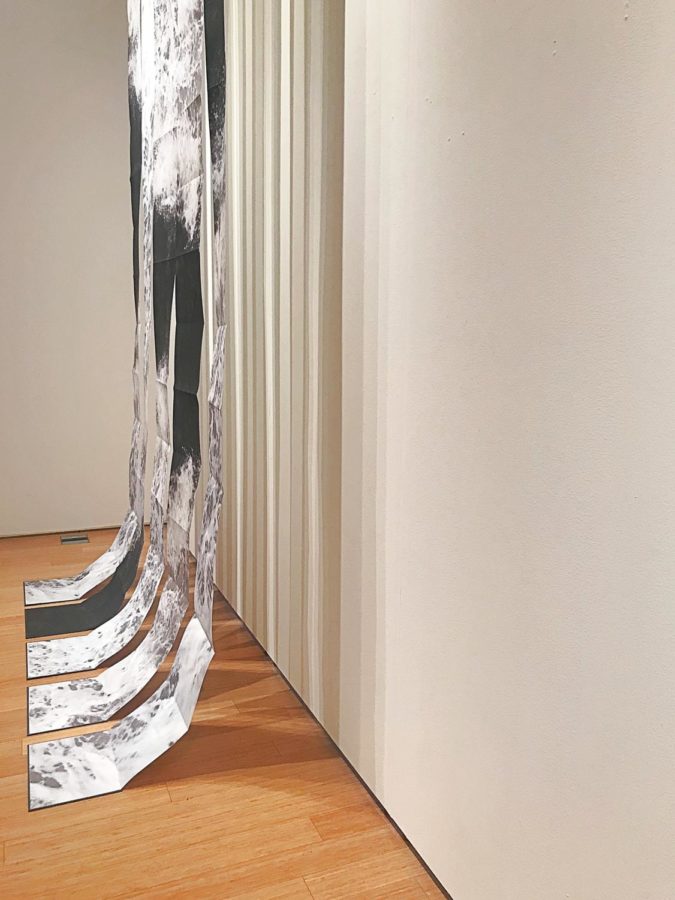
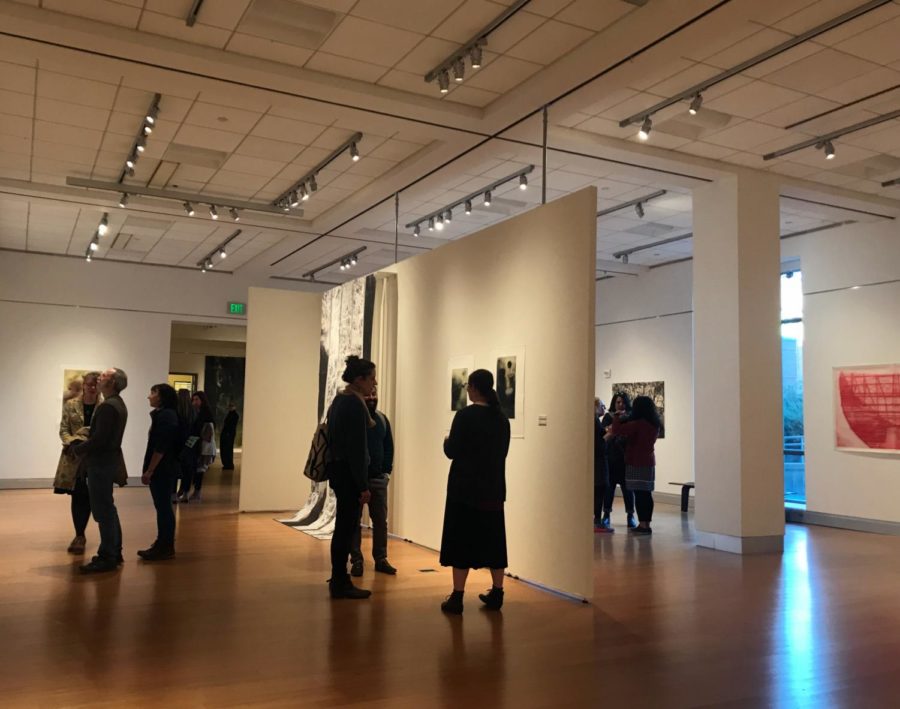
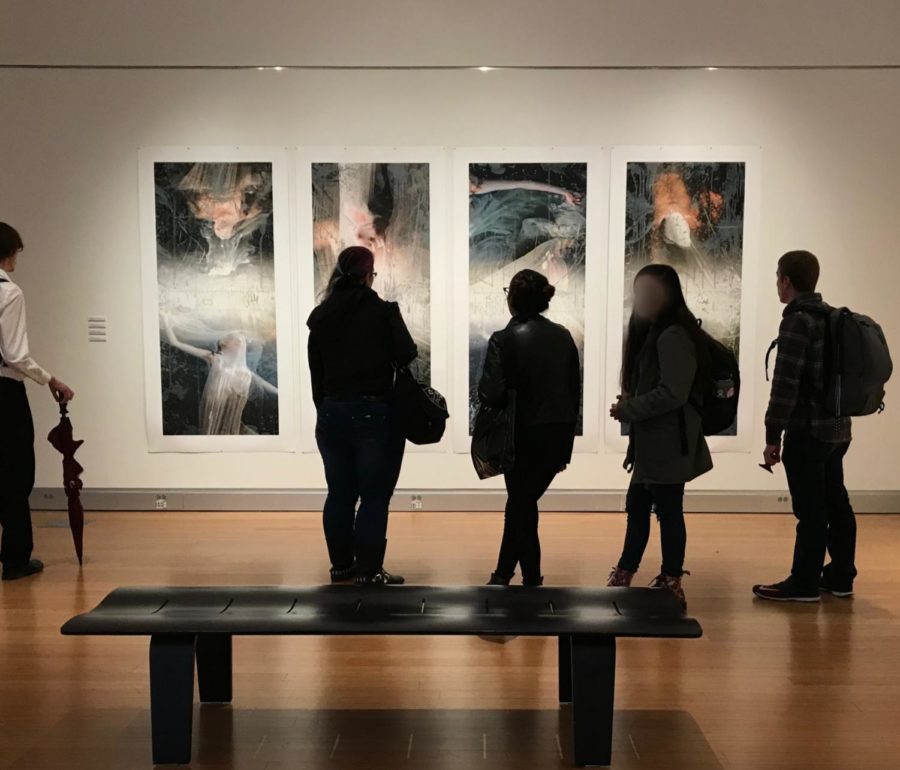
The exhibit is in the Robert F. Agrella Art Gallery, located at the first floor of the Frank P. Doyle library.
Featured artists include: Kelsey Stephenson from Canada, Liz Ingram from Canada, Olesya Dzhuraeva from Ukraine, Jennifer Basile from U.S., Nicole Pietrantoni from U.S. and Jenny Robinson from U.S.
The exhibition runs from Feb. 22 through March 15, weekdays from 10:30 a.m. to 4 p.m. and Saturdays from 1-4 p.m.



